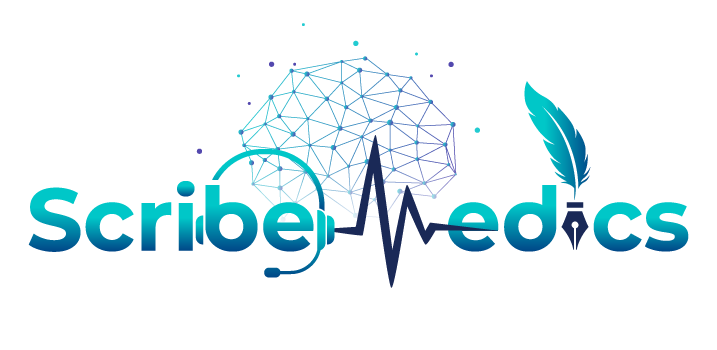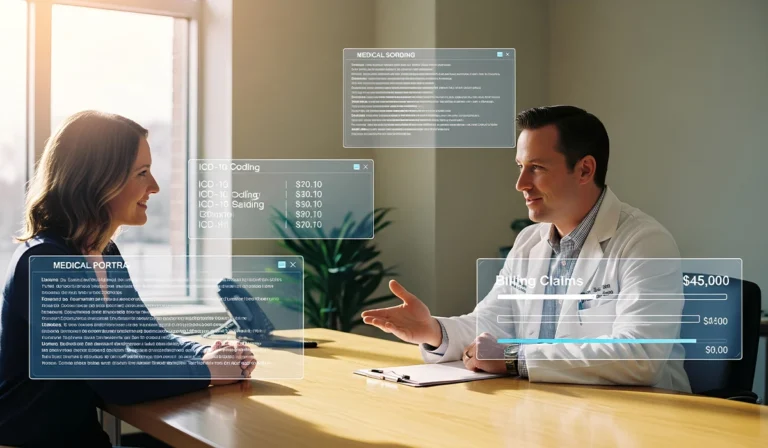Leading a healthy life is not just about treating your ailments. It is about understanding the related aspects to ensure overall well-being. Gone are those days when the patients had to carry a bunch of files to the clinic. In this digital landscape, the electronic medical record system allows doctors to study the patient without asking anything. However, it was not always like that. It is essential to learn about the history of medical documentation to catch up with the advancements.
As medical documents keep evolving rapidly, it is necessary to understand the associated factors to enhance the outcomes. The history of medical documentation is more intense than you think. This blog takes you back to ancient times when documentation was not as advanced as it is now. Before diving straight into the topic, let us start with the basics.
What Is Medical Documentation?
A medical document is your own medical journal. However, unlike a personal journal, this is not written by you. Instead, your healthcare providers or their scribes write it on your behalf. Such a document carries all the important medical data from your previous visits and allows your provider to have a comprehensive idea of your health when they access it.
The healthcare documentation process is not complicated. However, it needs a thorough understanding of complex medical terminologies and strong observation skills to create an accurate health record. Medical document translation services focus on ensuring that the patient records clearly convey the overall condition and medical history.
The provider is primarily responsible for documentation. However, the rising administrative burden has forced physicians to rely on medical transcription services for enhanced quality of care delivery. Documentation accuracy is linked to reduced claim denials and surprise bills. As the workflow is streamlined, the burden of healthcare in the USA eases.
Why Is Documentation Important In Medical Practice?
Proper documentation is the heart of accurate care delivery. If there is an error in the medical document, the continuity of care will be affected. This is specifically bad for critical patients. As they mostly need continuous care, a small disruption can cost their lives. This is applicable to the emergency room patients as well. As they mostly arrive in an unconscious state, neither they nor their families are available at the time when doctors need to make a life-saving decision.
If their history of health records can be accessed through cloud storage, it will save lives. Hence, technological advancements, such as electronic medical record documentation, can increase the overall efficiency of the care delivery process. A correct hybrid health record not only enhances patient outcomes but also streamlines medical coding and billing services. With correct codes generated from accurate documentation, there are no surprise bills or claim denials, leading to the practitioners overcoming delayed payments.
The Dawn Of Medical Documentation
The history of medical documentation is more interesting than it seems. From paper records to the electronic medical record system, documentation has come a long way. Digitalization has made it better, transforming the continuity of care. Medical documentation began not with technology or formal systems but with people trying to care more thoughtfully. In the early days, healers used to note down their observations. It could be a minor one, such as a cold and cough, or a major one, such as a persistent stomach ache leading to sleepless nights. Also, they used to document methods that worked to save a life.
These simple notes weren’t just records; they were memories passed down to help others heal better the next time. It was a way of saying, “I’ve seen this before, let me help.” Over time, those scattered efforts grew into a practice that followed medicine wherever it went. In other words, medical documentation started as a deeply human act. This combines the desire to understand, to remember, and to ease suffering – not just for one person but for everyone who would come after.
Comparison Of The Egyptian and Greek Periods
The history of medical documentation passes through ancient Egypt and Greece. Let us compare both to understand which one had more impact.
| Egyptian Period | Greek Period |
| The documentation was more religious, along with some empirical components. It was in the form of Hieratic script. Egyptian medics were mostly focused on spells and remedies. However, texts like the Edwin Smith Papyrus were more anatomical. The clinical notes used to be written on papyrus scrolls. | The documentation was philosophical and paved the way for scientific practices. It was in the form of Hippocratic texts. The Greeks focused more on prognosis and used to prepare case notes. Papyrus and parchment were used to add the patient observations. |
Development Of Ancient Medical Records
The practice of clinical documentation is older than you think. It originates back to ancient times when human beings were still exploring their environment to learn and grow as a dominant species. The patterns found in the walls of the ancient caves are proof that mankind has toiled so much to reach where they are today. Time may have changed, but health issues were always there. The history of medical documentation outlines these steps that they have crossed to reach where they stand today.
In early civilization, clay tablets were used in Mesopotamia to note down relevant clinical data. During the Egyptian period, papyri or papyrus scrolls became a mode of relying on. The Greek medics relied on the Hippocratic corpus to maintain a comprehensive database. The writings of Galen were popular in ancient Rome as an alternative. The medical document translation travelled through all these before turning into a more accessible form of communication for proper care delivery.
While this form of data was useful at that time, it was perishable. As a result, most of these are either damaged or have perished. Also, there was no way to keep all the records in a single medical document; it was challenging to manage the day-to-day updates of patients with long-term health conditions. At that time, these data were used as teaching tools or reference information for the physicians, not more than that. Greek medics took pride in mastering individual case histories, revolutionizing healthcare back then.
Difference Between Unsystematic and Systematic Paper Documentation
Paper records were a key part of ancient healthcare. The history of medical documentation may involve papers, but it does not always follow a systematic format. The comparison below will be ideal to look at.
| Unsystematic Paper Documentation | Systematic Paper Documentation |
| 1. Inconsistency in format due to its free form of writing style. | 1. A structured format that follows SOAP notes. |
| 2. No separate sections. | 2. Dedicated section for each segment, e.g., symptoms, allergies, etc. |
| 3. Difficult to understand because of scattered notes. | 3. Clearly divided and easily understandable notes. |
| 4. The data retrieval process is time-consuming as the physician needs to go through each line to find the relevant points. | 4. The physicians can easily retrieve data as the notes are structured and have a logical flow. |
| 5. The risk of errors is high. | 5. The error risk is comparatively lower. |
Creation Of Integrated Medical Records
As we stand in a time where medical records are crucial to ensure positive patient outcomes, it was not always like this. The evolution of integrated medical records started back in the 60s. Problem-oriented medical records (POMR) were a key advantage that set the stage for the conceptual foundation. The 90s saw a rise in departmental systems and the earliest EHRs. The 2000s came with IOM reports and CCD (Continuity of care documentation).
During this timeline, the patient safety mandates were the primary guiding force. The integrated medical records took a drastic turn in recent times due to cloud-based platforms. The history of electronic health records is presently paused at the integration of Artificial Intelligence (AI) and Machine Learning (ML). Predictive analytics is reinventing patients’ medical history in a way that will benefit the overall health industry in the best possible way.
What Is An Electronic Health Record System?
An Electronic Health Record (EHR) is a comprehensive source of all the health-related data of an individual. Whether they get their ears checked or go through a complicated surgery, everything is updated there. In this digital age, it has become important to store your data in the cloud for better access and management. EHR system enables the patients to make an informed health decision while allowing the providers to curate an accurate care plan that works.
With just a few clicks, the healthcare providers can access the previous medical history of the patient. Besides saving time during emergencies, EHRs help to identify outbreak patterns and support population health. As it is updated in real time, any physician observing the patient can understand their condition just by having a look at their EHR. Most importantly, the electronic health record systems focus on avoiding errors and fostering a better quality of care.
Difference Between Diaries and EHRs
Keeping a journal and writing down about your daily life is one thing, and maintaining a clinical database is a different thing. While technology can feel overwhelming to some medics, this chart will help you understand why embracing innovative tools can make you more productive and improve patient outcomes.
| Diary | Electronic Health Record |
| 1. There is no need for an internet connection to access a patient’s medical history. | 1. One needs a steady internet connection to access or update the EHRs. |
| 2. A diary can be destroyed by instances like fire breakouts or can get lost. | 2. Electronic medical records can never perish or get lost. |
| 3. Does not require the physician to look at the screen. | 3. The physician or virtual scribe must look at the screen to check or update the data. |
| 4. May or may not be structured. This completely depends on the person handling the diary. | 4. A well-organized database with a logical flow of content so that anyone accessing it instantly gets an overview of the patient’s health status. |
| 5. This does not count as a legal health record. | 5. This is a legal medical document that can be audited for legal purposes. |
| 6. Any person within its physical proximity can access it. | 6. Protected data that can be accessed only by authorized individuals. |
| 7. Does not support interoperability unless it is manually shared with the medical team currently dealing with the patient. | 7. As this is integrated with the system, it fully supports interoperability and ensures higher levels of patient outcomes. |
Impact Of Documentation On Patient Outcomes
Medical documentation can benefit patients in many ways. All the major factors are discussed below:
1. Reduced Medical Errors
Documentation helps to reduce medical errors by providing real-time data on a patient’s condition. This prevents unnecessary or duplicate lab tests and helps physicians to focus on the right direction. As it enables the doctors to get a comprehensive idea of the patient’s health, so that they can eliminate errors in the diagnosis or treatment plans.
2. Care Continuity
With the rise of complicated illnesses, the demand for interoperability has increased. The patients with long-term health issues must consult with multiple specialists to lead a healthy life. As the care continuity is enriched, it boosts patient satisfaction abruptly.
3. Chronic Disease Management
With numerous individuals suffering from chronic conditions, clinical documentation has helped patients to keep them under control. Structured data tracking using the EHRs has enabled physicians to plan on-time interventions and manage medication dosages. Hence, medical document scanning helps in the formulation of a better care plan.
4. Patient Engagement
As the hybrid medical record helps patients with self-management, it boosts their overall well-being. The patients can access their EHRs and check their medications, which improves adherence to the prescribed medicines. With this increased engagement, they can make informed health decisions, leading to a better quality of life.
5. Population Health
Documentation helps with risk assessment and early signs of outbreaks. Therefore, clinical documents help with preparedness to tackle health emergencies and foster overall well-being. It also supports the fight against complex illnesses like cancer through screening compliance.
Integrating AI in Documentation
Artificial Intelligence is taking mankind closer to the clinical revolution. Incorporation of AI in medical documentation opens the door to new possibilities of clinical excellence. With an AI scribe listening to the patient-provider conversation, the physicians can look away from the screen and observe the patient better. This will improve the diagnosis.
AI will reduce documentation time, while human scribes will go through the clinical text afterwards. The goal is to add nuances and remove errors. AI will also ensure compliance so that the physician does not face legal issues in the future. Therefore, with the inclusion of AI in this scenario, the history of medical documentation has arrived at a promising spot.
The Hybrid AI Scribe Model By ScribeMedics
While AI-powered tools are simplifying the charting process, it does not guarantee error-free documentation. Human oversight is still required to ensure there is no AI-biased words or data ambiguity. In such a scenario, a combination of both can bring more effectiveness to the clinical documentation process.
The doctors can rely on ScribeMedics, the best scribing solutions provider in the USA, to bring more accuracy to the patient records. Their hybrid AI medical scribe model combines AI speed with human attentiveness. As the AI accelerates the documentation process, human oversight helps to eliminate errors and add emotional nuances to the record. If you are looking for the best AI medical scribe, talk to us!
Frequently Asked Questions
The hybrid model of healthcare is really about meeting people where they are. It combines the best of in-person care with the efficiency of virtual consultations. Therefore, the patients do not always have to travel, ask for leave, or wait in a long queue at a health facility. As they will be saved from all these hassles, the patient satisfaction level will increase.
You may want to check in with your doctor via video for a follow-up, but please come into the office when something requires a closer examination. It is not about replacing face-to-face consultation. The primary objective is to make healthcare more flexible and accessible. This approach became popular during the pandemic. At its heart, the hybrid model is about making healthcare feel less like a system and more like support care that fits into your life, not the other way around.
In medical documentation, the term “hybrid” refers to a combination of two different methods or systems to improve the quality of care. These are used to enhance operational efficiency in the health sector. The term may also apply to hybrid medical records, where both paper and electronic systems are used. Lastly, it can outline the importance of both virtual consultations and clinic visits to foster better care delivery. The patients can book online consultations and visit the specialists whenever they need a physical evaluation.
The goal of a hybrid healthcare approach is to utilize the strengths of each component. This aids in providing more flexibility, improved outcomes, and transitional support during health emergencies. If you provide online consultations and want to boost your productivity, opt for ScribeMedics, the best medical transcription company in usa.
Egypt was the origin from which it all began. Over 4,000 years ago, in ancient Egypt and Mesopotamia, papyrus scrolls and clay tablets recorded injuries and remedies. Around the 5th century BCE, structured case histories with chronological observations and diagnoses, introduced by certain physicians, laid the foundation for clinical reasoning.
Various prominent Islamic scholars expanded record-keeping during the Middle Ages, and by the 18th and 19th centuries, daily hospital logs and problem‑oriented records became standard. Eventually, digital methods emerged in the 20th century with electronic health records, linking a legacy of patient data to today’s AI-assisted documentation.
The history of medical documentation is really about our ongoing effort to care better and remember more. Long ago, healers began writing things down – on clay tablets, scrolls, anything they had — to keep track of what helped their patients. These weren’t just notes; they were personal stories, small attempts to make sense of pain and healing.
With the advancements in healthcare, the documentation technique has evolved over time. Physicians started recording not only symptoms but also the feelings of the patients. The medical document included the treatment plan and possibilities, too. Healthcare providers began to rely on medical histories to give more accurate and thoughtful care. Today’s digital systems may look high-tech, but at their core, they still serve the same purpose. The hybrid health record ensures no one is forgotten. It aims to document the unique journey of each patient to streamline care delivery.
The history of medical documentation goes back to ancient times. Medical documentation has grown alongside medicine itself. From simple handwritten notes on paper to the fast electronic medical record system, the transformation is beyond imagination. Decades ago, a mere scribbler of a doctor was the sole source of patient information. While those paper files were not structured enough for a clear view or were hard to share, the care providers sought more convenient ways. As patient needs increased, so did the healthcare complexity as well as the demand for structured record-keeping.
The shift to EHRs was a milestone for the doctors. Patient information has become more accessible, organized, and accurate. With tools like speech-to-text and many more, doctors can spend increased time away from the screen, observing the patients. While it is still evolving, the documentation process has become structural. ScribeMedics can help physicians update EHRs accurately with their medical transcription online.
The earliest known documents on medical practices go back to ancient civilizations like Egypt and Mesopotamia. One of the most remarkable texts is an Egyptian medical manuscript. This comprises injuries, treatments, and surgical techniques with surprising detail and logic. Though copied at a later time, it reflects knowledge passed down through generations. The cuneiform tablets from Sumer are even older and include practical remedies along with spiritual rituals. Those are evidence of the thirst to discover better methods to boost healthcare efficiency.
These old medical records show that people have been trying to understand illnesses and healing techniques for a long time. They have often blended observation with belief for clarity. It sounds interesting that the roots of medicine stretch so far back into the history of medical documentation. It not only reveals technical curiosity but also compassion and a desire to reduce human suffering. This tradition continues to this day.
There are several types of medical records. Each plays a part in your overall well-being. While some of the medical documents are stored by healthcare organizations, some of them can be accessed and managed by the patients. There are also records specific to certain areas like mental health, dental care, or specialist visits. These varied documents help to keep track of a patient’s well-being from various aspects. Electronic health records bring ease of data transfer and aid in its protection.
Despite the existence of various types of records, all of them work towards the same goal. The medical documents ensure you do not lose your data or have to look for it during emergencies or continuity of care. Not just your test results or prescriptions but your history, your concerns, and the care you’ve received over time. Medical records are less about paperwork and more about continuity – making sure that wherever you go, your story is clear, and you don’t have to start from scratch. It’s how healthcare stays personal, even in a complex system.
After traditional scribes, there came AI medical scribes in healthcare. Artificial intelligence was integrated into scribing solutions for fast and accurate documentation. However, the word “accuracy” seemed to fade away due to AI errors caused by algorithmic bias, hallucinations, or audio distractions. Therefore, it is evident that human intervention is required for optimal outcomes. Hence, the arrival of the hybrid model, the human-AI symphony.
In this model, the expertise of AI and human brains is combined to ensure the highest level of accuracy in the medical records. While AI speeds up the documentation process, human oversight helps to detect errors. As a result, the doctors get an accurate result within a short time span. Hybrid medical documentation is the future of healthcare. ScribeMedics is one step ahead in this context with its hybrid AI medical scribe model.
Hybrid medical documentation models solve some of the daily struggles patients and providers face with traditional systems. With the rising burden of administrative tasks, it has become necessary to focus on alternative ways. These models ease the burden of paperwork by combining digital tools with in-person care. This makes real-time documentation easier. Physicians are likely to spend less time on paperwork and more focus on patient care. Meanwhile, for patients, it is about staying worry-free about their history of medical documentation.
Hybrid medical record documentation models help to bridge gaps between in-person visits and virtual care. Therefore, the EHRs are consistent regardless of the provider you opt for. It brings everything under one roof. This includes past visits, lab results, and prescriptions, so the full picture is always within reach. To sum up, this model is about reducing delays, avoiding confusion, and helping care feel more connected, accurate, and human. Besides overall efficiency, it also takes clarity and trust into consideration.
Medical documentation in the USA is changing in ways that allow the clinical focus on patient care to be increased. The piled-up paperwork of handwritten notes is slowly transforming into fast documentation relying on technology. It seamlessly transfers clinical data between providers. This is helpful in care continuation, too. Healthcare professionals are using advanced tools like voice-to-text, smart systems, etc., to reduce physicians’ screen time. Hence, they can have a greater quality of mental health.
However, technology can be overwhelming and may take a longer time to align with the existing process. Meanwhile, slow adaptation can direct the health sector towards a better tomorrow. This shift in documentation is about making sure every patient’s story is told clearly, shared easily, and used to offer better, more personal care. ScribeMedics can support documentation accuracy with its hybrid AI medical scribe.
Dinesh Kumar is a healthcare workflow architect and clinical documentation expert with over a decade of real-world experience supporting physicians across multiple specialties in the United States. As the Co-Founder of ScribeMedics, he has helped transform how medical practices handle documentation, coding, and administrative workflows, reducing burnout, improving patient flow, and enabling clinicians to reclaim their day.
Since 2013, Dinesh has worked closely with providers on the front lines of patient care. Over the years, he witnessed a recurring problem: clinicians were drowning in administrative work, spending hours after clinic hours updating charts, reconciling notes, and managing documentation backlogs. Instead of accepting this as “part of the system,” he decided to fix it.
Under his leadership, ScribeMedics has grown into a global hybrid scribing and documentation support company known for accuracy, compliance, and reliable workflows. From medical scribes and CPC-certified coders to virtual back-office support, his teams help multispecialty practices increase revenue integrity, reduce charting time, and improve patient-physician satisfaction.
Dinesh works with healthcare providers, practice owners, and attorneys who want streamlined documentation, better reimbursement outcomes, and more efficient operations. His approach blends empathy, process engineering, and deep domain expertise to create systems that work, day after day.
When he isn’t optimizing clinical workflows, Dinesh mentors documentation teams, trains young professionals, and speaks about burnout prevention, workflow design, and the future of hybrid AI-driven scribing.









 Medical Transcription
Medical Transcription Medical Billing
Medical Billing Medical Coding
Medical Coding